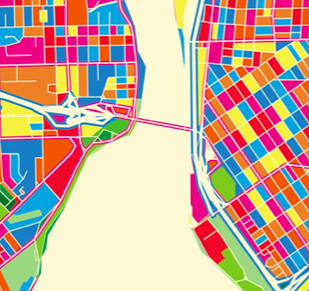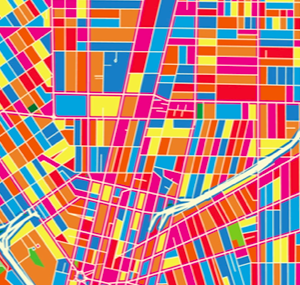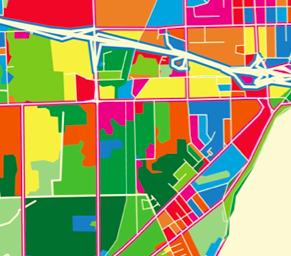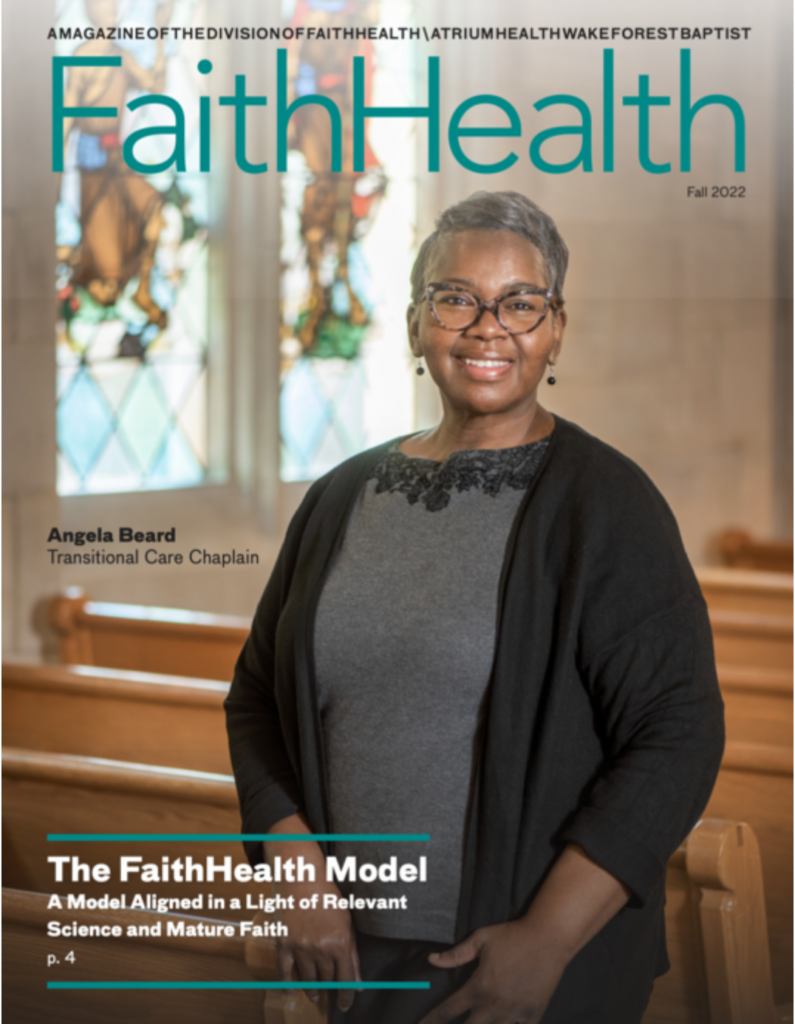Buffalo Congregations, Others Make Real Difference in COVID-19 Response
In Buffalo, New York, faith-based, community, government and health care leaders join together to effectively respond to the disproportionate impact of COVID-19 on the African American community.
By Tom Peterson
Rev. George Nicholas is pastor of the historically black Lincoln Memorial United Methodist Church in Buffalo, New York, in which he was reared. He had great concern for the Black community in Buffalo, which for generations has suffered from neglect and poor public policy decisions by corporate interests, and where 40 percent of the people live in poverty. Around 2014, he and some other Black pastors were approached by a group with a query around colorectal cancer: How do we get information about colorectal cancer out into the African American community?
Nicholas challenged the group to have a bigger vision. “Let’s dig deeper and not just focus on one particular disease  but on the general health of African Americans in Buffalo to see if there’s a common thread as it relates to chronic diseases.” So, they formed a small group of mostly clergy and a few other community leaders who then reached out to some technicians who could help them look at state and county data and to understand the health of Black people in Buffalo.
but on the general health of African Americans in Buffalo to see if there’s a common thread as it relates to chronic diseases.” So, they formed a small group of mostly clergy and a few other community leaders who then reached out to some technicians who could help them look at state and county data and to understand the health of Black people in Buffalo.
From this work, the group learned of the high numbers for the preexisting conditions of asthma, diabetes and heart disease in Buffalo’s Black community. And they realized that “when COVID-19 came into this region, it was going to have a potentially devastating impact upon Black folks,” says Nicholas. “We lost people early on in the process. We lost some prominent people.”
The data that informed their work was that, in the five or six ZIP codes where about 80% or 90% of African Americans live in Erie County (where Buffalo is), African Americans were off the charts in terms of the health disparity around every chronic disease: diabetes, heart disease, cancers, asthma. They were 300% more likely to have a chronic disease if they lived in those communities versus a white person who didn’t, and that translated into shorter lifespans, roughly 10 to 12 lost years of life and a lower quality of life for many.
A historic tension, even some hostility, between the Black community and the University of Buffalo stemmed from a sense that the academy was not really trying to solve problems within the Black community and because Black people were research subjects but never received any benefit from the results of the research. The university had just built a major medical school right in the Black community that was disrupting the neighborhood in a lot of ways, including displacing people, according to Nicholas. But that didn’t deter him. “If there are institutions within your communities that have not been … good partners with the Black community, don’t let that history prevent you from holding them accountable and making them work with you on current challenges.”
So, they created the African American Health Equity Task Force with many partners, such as the schools of education, law, nursing, management, social work and urban studies. They all came around the table to look at the data. The task force wanted an independent institution that would do research advocacy of program development and strategic planning around how to move systems to positively impact the health of Buffalo’s Black citizens. The group established the Buffalo Center for Health Equity, which included not only the various schools at the university but other groups such as Concerned Clergy of WNY and Hope Buffalo. The center’s goal is to “eliminate race, economic and geographic-based health inequities by changing the social and economic conditions that cause illness and shorten lives.”
“We created a safe space but also a transparent, open and honest space where some white institutions were really confronted with their own internal racist practices that contributed to these negative outcomes,” says Nicholas.
Fast forward to 2020 when COVID-19 was about to hit the community. The group already knew that the existing health systems were not sensitized for the priority of Black health. So, a phone call gathered community leaders, including public health officials, to ask “what’s our plan to deal this great threat?”
Infecting with Information
Raul Vazquez, MD, is chief executive officer of the Greater Buffalo United Accountable Healthcare Network (GBUAHN), an independent association of physicians organized to contract as a group to provide health care services. Having practiced in the area for 30 years, Vazquez understood the value of being rooted in the community,  and that made a big difference when the pandemic hit. The group developed a community response by creating different buckets. Because they had data on thousands of people, some dealt with population health (focusing on cohorts or groups vs. just individuals).
and that made a big difference when the pandemic hit. The group developed a community response by creating different buckets. Because they had data on thousands of people, some dealt with population health (focusing on cohorts or groups vs. just individuals).
They offered COVID-19 testing because at the time there was almost none going on. “My office had been running a drive-through testing site. We were just trying to keep up with these supplies because there was not enough at the time,” says Vazquez.
And they thought about the 15,000 people they were managing through care coordination and wondered about infecting those 15,000 lives with information. Those people could then share that information. Meanwhile, to avoid spreading the virus, the group shut its offices in March and shifted to telehealth. Then, Vazquez reports, the group decided “let’s do the chase list. Let’s find out who’s at risk, collaborate with the churches, collaborate with the behavior entities and the coordination arms. We have about 240 employees, we have an IT infrastructure that can handle two to three thousand calls.”
“We looked at high-risk individuals,” says Vazquez, “We looked at people that really were affected by social determinants of health and would have the potential to get into trouble.”
With telehealth — if not through video then through phones — the number of visits almost doubled. “We were telling them to stay away from the emergency rooms. We told everybody to stay home.” If people tested positive, they were told how to look out for others.
The Buffalo Center for Health Equity, in partnership with the many churches, created a phone bank system using phone number data from the Board of Elections. The group knew that when someone from the church calls, they’re going to get a better response because they’re already known. “It was great because we were able to kind of put them on our platform so … they had chase lists,” says Vazquez. “The churches are often the trusted entity in both the Black and brown communities.” From this large-scale, HIPAA-compliant “tele-triage,” the group was able to tell people about testing availability, send out equipment, create virtual visits to bring in specialists, make sure people had food, personal protective equipment or other help. And they were able to go to the homes to provide needed services. “In the old days, the sick people did not come in, you took care of them at home,” says Vazquez, “so we just went back to that model.”
The group hired COVID response team members, mostly out of the churches or students who were home from college, and trained them, got them on the phones to make appointments and to just do the tracking and the follow-up. “They had a level of compassion and patience and an understanding,” says Nicholas. “It’s tough because when you’re cold-calling people, the response rates aren’t great — but they’re good — because a lot of people don’t want to talk to somebody they don’t know. But we persisted. We got on the Black radio and said to the community, ‘Listen, these calls are coming. They’re not bill collectors. These are people trying to help you out.’
“We’ve made over 100,000 phone calls now,” says pastor Nicholas. “We partnered with GBUAHN, Dr. Raul Vazquez’s organization.” Of course, some people don’t have phones, so the group contracted with the National Witness Project, which sent teams door to door in the midst of the pandemic to check on people and ask if they needed help. The group and others set up testing inside sites at a local library and in other places and made sure that the community-based health centers had access to tests.
 What Were the Results?
What Were the Results?
According to the Centers for Disease Control and Prevention, race and ethnicity can point to “risk markers” for conditions that can worsen COVID-19 outcomes, such as poverty levels, access to health care and increased exposure to the virus due to jobs as essential workers. Nationwide, the rate of cases for African Americans compared to white, non-Hispanic people is 2.6 times higher and the death rate is 2.1 times higher.
The first issue, according to Maria Whyte, deputy county executive in Erie County, was a commitment to transparency about the data. The second was the political and community will to work together. And the third was creativity about what strategies to employ, including those by partners outside the health care provider systems. For example, says Whyte, transportation to testing locations was identified as a barrier. So, they engaged with Erie County health nurses and the Department of Public Works vehicles to take the coronavirus test directly to individuals. This was in addition to the mobile testing units set up by Vazquez.
Beyond the many local churches, the effort included the library system, private health care systems and others. Labor unions were able to identify 5,500 essential workers who lived in the three ZIP codes with the highest concentration of COVID-19 cases.
These phone banks not only connected people to resources, but they also gave in-the-moment direct feedback about what people needed. “To solve the right problem, you have to have proximity to the problem,” says Whyte. “Being in touch with folks like Rev. Nicholas who conducted these phone banks helped us maintain that proximity to the problem and really make sure we properly understood which problems needed solving.”
And how did their problem-solving turn out when compared to similar sized cities? While African Americans make up 13% of residents of Erie County, they account for 16% of the COVID-related deaths, a pretty close number. A research assistant in Whyte’s office looked at other municipalities across the country similarly sized to Erie County (with roughly 1 million population) that were also tracking COVID-19 data. For example, African Americans in St. Louis County, while 25% of the population, made up 39% of the COVID-related deaths. In Milwaukee County, Wisconsin, African Americans represent 27% of the population but 40% of the deaths, reports Whyte.
The focus on the social determinants of health is essential, and although COVID-19 has exposed the great cracks in the system that were already there, Erie County itself was already working on it, says Whyte. Years of building trust and working together allowed the various groups to move quickly — and together. Last September, they launched Live Well Erie, a partnership of more than 90 nonprofits, businesses and others, to eliminate many of the health disparities. “We know that we have a great deal more work to do, says Whyte, “but we are on the right track and trending in the right direction.”
This article draws, with permission, on a National Academies of Sciences, Engineering and Medicine webinar with Live Well Erie, a coalition that focuses on the social determinants of health. Watch the webinar HERE.

